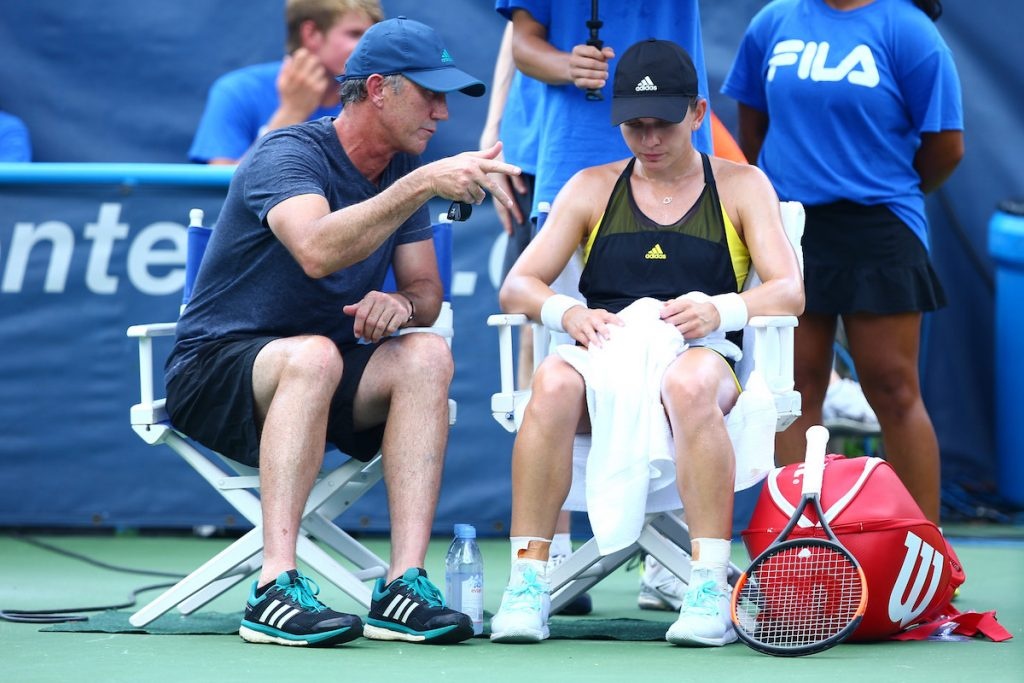The good old commissioner idea is back, but this time it stands a chance
As the tennis world is put to a stop by the sanitary crisis, an old idea comes back in force: having a commissioner to supervise the Tour. And, even more, having a commissioner supervising a merged Tour.
 Long form about the commissionner by Tennis Majors
Long form about the commissionner by Tennis Majors
Anyone spending enough time inside the tennis world has a shortlist of hot topics that regularly come back in the debate. The commissioner is one of them. That is to say the person who, mostly in the US sports, is in charge of supervising the sport as a whole, making sure every rule and decision is taken is for the greater good of the athletes, the instances, the business and the sport in question. All the conflicts and issues goes through the commissioner who then decides. In tennis, usually, you’d get a news cycle about it, some tense arguments about it and then for some reason only tennis governance knows it would disappear into thin air. Just like that, ‘bye-bye and see you next time’.
For years, for instance, each time someone would bring up the Davis Cup overhaul file, you would see some of us inadvertently rolling our eyes and others having different Pavlov’s reflexes. Not that we wouldn’t care about the topic, but because we knew it would just lead to talks after talks, arguments after arguments and all for nothing. Even players would start their answers by long sighs of brain distress before going into it, having the feeling of a broken record.
Why now? Because the sport’s back is on the wall maybe
But yet, we finally got that Davis Cup change – whether people liked it or not is not the point – and so it proved that maybe if you bring up a topic often enough during different eras of governance, maybe at some point, even in tennis where change is often not welcome, some mountain can be moved. But it actually mostly proved this point: unless the tennis world’s back is against the wall and by it, we mean about to lose millions and about to take a risk of collapse, no wind of change has a single chance to pass through the room. And so the Covid-19 outbreak might have just provided the tennis world with this once-in-a-lifetime chance to evolve.
The Tour is suspended, tournaments are getting cancelled, players aren’t getting any money, and all of this without knowing until when. And all of this while competing in a very competitive business. So, like by magic, guess who’s back? The Commissioner idea! Long time no see, nice to see you again! A year ago, pre-worldwide disaster, the answer nearly everywhere in tennis would have been: “Again, great idea, but you know it’s never gonna happen”. But what are we discovering in April 2020? That Andrea Gaudenzi, newly elected as ATP Chairman, is praising the “collaboration” and “unity” of the governing bodies. With Vasek Pospisil revealing that a plan to merge the ATP and the WTA had been presented to the players’ council in January.
A commissioner to save them all?
And the only logical thought following a merging is: who will head that new entity? Well, hello again commissioner. Hello to the person supposed to be ruling on a unified tennis world, independently and for the greater good of the sport. Someone that would cut through the conflict of interests, organise a fair distribution of the prize money, and even TV rights money maybe. Someone who would put a stop on the scheduling issues and who might even prevent players from having to play with different types of balls every week. And all of this after careful consideration of everybody’s desires. Say adieu to that 50-50 association between players and tournaments with all the conflicts of interests and lockdowns it can lead to, and welcome with open arms the one to administer them all.
“A massive opportunity”, Cahill
It sounds a bit like Alice in Wonderland, I know. But it’s really how that position is presented by those who push for it to be created. As many would say: “It works with nearly all the US sports”. Because yes, the commissioner is a common thing for them and so tennis is looked at like an oddity, governed by eight different bodies (ITF, WTA, ATP, tournaments, the four Majors) with different regulations, different prize money rules, and little effective communication. A kind of a mess, but a mess that’s also been working nonetheless.
Can one person or one commissioner really stand a chance in the tennis universe where you have no franchise, but many very strong tournaments, sponsors, and players? That’s the whole test to come because even if that commissioner would take the form of a merger of the ATP and WTA leaders and added a players’ representative and a tournaments’ representative, it’d still have to be an entity with clear powers, and so authority. Why would the tournaments that put loads of money into the Tour accept that? If they end doing it, it’d be again because the crisis happening right now is about to act like a tsunami.
Australian coach Darren Cahill, who has been advocating for years for both Tours to be one, hopes something like that can happen now.
“There is a massive opportunity now for the two tours, then the Grand Slams and the ITF, to make some real change. And everybody has been talking about the difficulty of making change because sort of one year rolls into the other. Everybody’s posturing for their own tournaments or even their own tours. And you have a chance here at the moment to wipe the slate clean, and for the ATP and the WTA to start working together more effectively. And I see that’s happened over the last couple of weeks thanks to initiatives where they got together. I love to see that instead of working against each other. As two competitions in the same market, fighting for the same sponsors and the same social media, same TV rights, and the same type of money…”
The Big 3 hold the key
Roger Federer has been a quiet but effective support for equal pay between men and women players, whereas Rafael Nadal, not as convinced as the Swiss, mostly tried not to get involved enough to get dragged into the mud and never campaigned against it. So there’s just no way both woke up one day thinking “damn, that’s it’s, that’s the thing: let’s be united!”. No. Not in the tennis business. It’s not happening. Same as Gaudenzi didn’t take the risk to come to the players’ council with a proposition of unifying both Tours without knowing that it wouldn’t cost him his head.
He knew that Novak Djokovic had been pushing for a serious overhaul of the ATP governance for years and had been instrumental in showing Chris Kermode the door, as he’s proved to be in getting a relief fund approved now for the players. And if it could be tougher to convince the Djoker about a merged Tour, seeing Federer and Nadal rallying the idea has proven to Gaudenzi that those three were possibly ready to lead the charge for change. Whatever the change ends up being, as long as the three can find common ground. Because let’s be real, if any governance change has a single chance to work, it’d be because the three most influential male players of this time are ready to get into it for good. Gaudenzi surely isn’t flying solo on this now. No way.
The silver lining of a tragedy?
“Our sport has a big opportunity if we can come together in the spirit of collaboration and unity”, said the ATP boss to the New York Times. “Recent cooperation between governing bodies has only strengthened my belief that a unified sport is the surest way to maximize our potential… And to deliver an optimal experience for fans on-site, on television & online. To that end, I welcome the views of our players. Tennis has always led the way when it comes to putting men and women together on the biggest stages – it’s one of our strengths and sets us apart from many other sports. We look forward to continued collaboration and discussions with the WTA and other stakeholders across all aspects of our business.”
Still, it could have taken years of talks, of transitions, of trading and of, let’s be real, internal wars. But the coronavirus outbreak landed, destroyed the tennis business in a few weeks, promised to keep destroying it for months and maybe years. A tragedy. But a tragedy that could have a silver lining: forcing the wind of change in a sport that resents it. There was no way for a commissioner idea to have a chance to get real unless something dramatic happened. Even Federer can’t make it happen on his own by snapping his fingers. He couldn’t have the Davis Cup revolution done on his own, Nadal neither, Djokovic neither. So, no, one of them wouldn’t do the tennis governance revolution on his own. But the three of them, teaming maybe with Serena Williams? That’s something else.
It’s still a massive surprise that Federer and Nadal started to go public with a merge of the Tours that was just starting to be on the table. They’re also taking a huge personal risk if either nothing is done or if the rest of the players, and tournaments, don’t follow their way. Putting a commissioner above the ATP and the WTA, still different entities, would have seemed to be a safer starting plan. And it could still be the first phase of the whole thing, as it could be tough to have a majority of players on both sides abiding to the unified Tour. The ATP players haven’t led anyone to believe they were all as feminist as Andy Murray. And the WTA players, who know it, won’t be ready to jump in without strong guarantees.
“I’ve always believed that the right thing for tennis is for there to be one entity and one commissioner”, Worcester
That’s maybe why Steve Simon, the WTA CEO, was way more measured than Gaudenzi when asked to comment by the New York Times:
“The WTA has been working closely with the various stakeholders and governing bodies in our sport to address the challenges caused by the COVID-19 pandemic. As part of that process, we have been in regular contact with the ATP, with a common focus on the health and well-being of our players and all those in our sport, as well as issues affecting our Tours and our ability to return to tournament competition. I have long stated that we are at our best as a sport when we can work together. The recent weeks have highlighted that fact. We look forward to continuing discussions on how we can effectively work together to deliver the greatest value to our fans and to our many stakeholders.”
So one is going to have to show all players the serious advantages to make them bend. Or to take a leap of faith that no one will start a tennis war over the project if it goes ahead whatever the complaints might be. But Federer rarely gets into a public battle if he has not been given serious hints he’d win it. So one is left wondering what’s going on backstage for such a revolutionary plan to get such huge support now. Because Billie Jean King has been advocating for it for half a century. “I have been saying so since the early 1970s. One voice, women and men together, has long been my vision for tennis”, she said after Federer and Nadal’s statements.
I agree, and have been saying so since the early 1970s. One voice, women and men together, has long been my vision for tennis.
The WTA on its own was always Plan B.
I’m glad we are on the same page.
Let’s make it happen. #OneVoice
— Billie Jean King (@BillieJeanKing) April 22, 2020
The answer is surely not a question of peace and love. It might more be that there’s a true and legit fear of the whole tennis business tanking under the weight of Covid-19. This means that right now sponsors and tournaments might be ringing the alarm all over. And so both Tours are facing tough choices to be made quickly to avoid collapse. Players coming to terms with a strong risk for the prize money to stop growing and to start a fall, oil crisis style.
Adding that the underlying anger from players regarding prize money distribution has grown stronger and stronger in the last couple of years, demanding strong changes now and not tomorrow. A current that is meeting another one praising the successful model of combined events and asking for more equality. And last but not least, the ATP perfectly knows that the end of the Big 3 era is getting close and that it will have potentially dire consequences on its finances.
All in all, the sanitary crisis that has stranded the Tours, for now, is acting as a catalyst. And on paper, yes the idea of having someone supervising the whole sport and helping to elevate both the quality, the fairness of treatment, and the bankability of the product, sounds great. That’s the feasible version of something you’d ear every week on Tour: “Couldn’t they just get all into the same room, talk, and find a way?”
“I always say: ‘Crisis reduces smugness’ and really increases the sense of collaboration”
Cahill believes it really could be a game-changer.
“The structure is incredibly complicated, so if we can simplify… It’d make it easier for everybody involved in the game, but also for the public. If they don’t take this opportunity, we may never get that chance again for many years. Having a commissioner of tennis is a dream for sure, but it’s also difficult to do because everybody wants their piece of the pie. But let’s say the ATP and the WTA would merge and become one Tour, and then you have a commissioner of tennis, not so much commissioner of the Slams. I think there’s an almost cost-cutting saving that can be done by doing that. And then the two bodies work together for the betterment of the players and the game. As long as you get the right person.”
Anne Worcester also pushes for making that change now instead of waiting for it to be too late. She was the first woman CEO of the WTA in 1994, then tournament director for the Connecticut Open and is now UTR (Universal Tennis Rating)’s president. And she hopes tennis understands that today’s crisis needs a strong answer. She told Forbes about it:
“In my 35 years in tennis, I’ve never seen anything like this. Not through houses crises, not during 9/11, nothing with the far-reaching impact that this has had. I’ve always believed that the right thing for tennis is for there to be one entity, and one commissioner, with plenty of independence in all the right ways. I do think that the silver lining of this crisis will be increased collaboration. I always say: ‘Crisis reduces smugness’ and really increases the sense of collaboration. If tennis is going to come out of this and compete, we’ve really got to get it right this time around.”
Having a commissioner would be all about pragmatism
What could flip the coin is that post Covid-19, the world of professional sports risks to be very congested.
“We are going to be competing against so many sports and other entertainment vehicles”, says Worcester. “So all of our tournaments are going to be competing for the consumers’ time and dollars to buy a ticket, for the television viewer, for the sponsorship dollar. So all the more reason the sport needs to be more strategic about how it presents itself.”
That’s exactly why the commissioner idea has never had a better shot to turn into a reality. Not because the tennis world has decided to open its heart and fight as one for the greater good – please – but because it needs a strong strategy to survive Covid-19. The Davis Cup change as the system – and all its money – was about to collapse, so there’s little doubt that if the tennis world was seeing new governance in place for 2021 with both a merge and a commissioner or with just a commissioner, it’d be because the situation is dire.
And because the most influential players have decided it was time to move. They called the end of the Davis Cup as we knew it, and they were going to call the end of the Tours as we now know it at some point anyway. Everybody knew it. Covid-19 just accelerated the process by giving an emergency status. Now let’s see if this is it or if by 2025 someone will say, “what about that commissioner idea now, wouldn’t it be the time again?”









